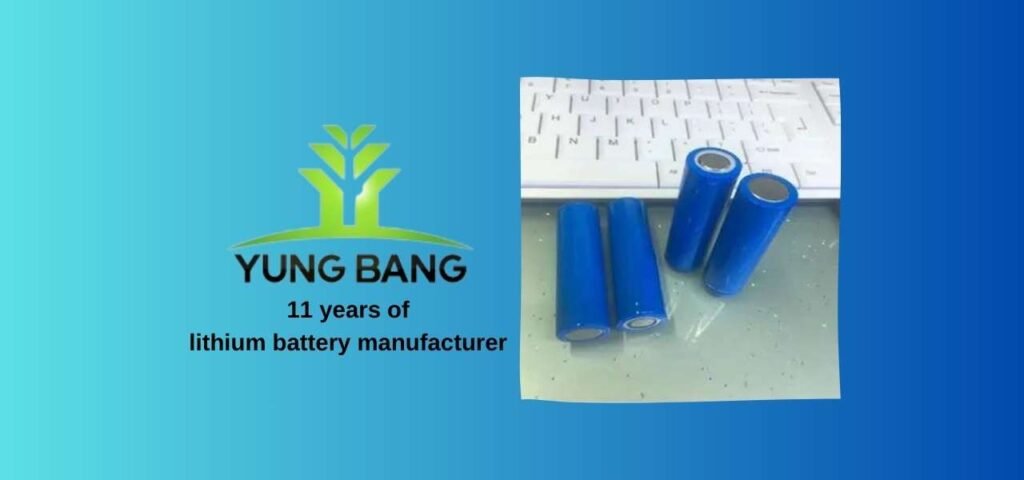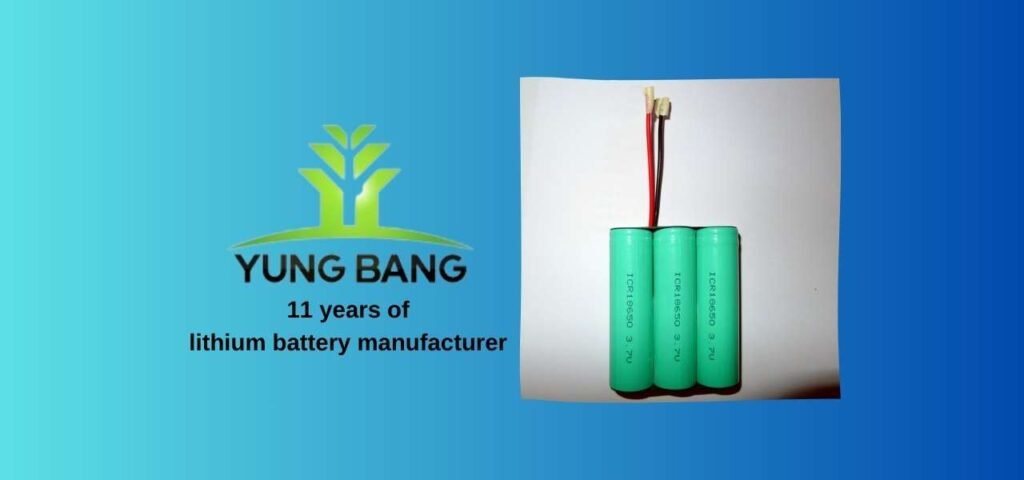1.Решение проблем безопасности при использовании аккумуляторных батарей 3,7 В
В сфере портативных решений для питания, Аккумуляторные батареи 3,7 В становятся все более распространенными благодаря своему удобству и универсальности. Однако с широким распространением этих батарей возникает необходимость решения потенциальных проблем безопасности, связанных с их использованием. В этом подробном руководстве мы рассмотрим общие соображения безопасности и дадим рекомендации по безопасному и ответственному использованию аккумуляторных батарей 3,7 В.

2.Понимание Перезаряжаемые батареи 3,7 В
Распаковка основ
Аккумуляторные батареи 3,7 В - это один из типов аккумуляторов. литий-ионный или литий-полимерный аккумулятор которые работают при номинальном напряжении 3,7 вольта. Эти батареи используют электрохимические реакции для получения электрической энергии, что делает их пригодными для питания широкого спектра электронных устройств.
Основные характеристики
Номинальное напряжение: 3,7 вольт
Химия: Литий-ионные или литий-полимерные
Возможность многократного использования: Возможность перезарядки в течение нескольких циклов
Плотность энергии: Высокая, идеально подходит для портативных устройств
3.Проблемы безопасности и стратегии их решения
Риск завышения цены
Одной из основных проблем безопасности, связанных с аккумуляторами 3,7 В, является риск перезарядки, которая может привести к тепловому разряду и потенциальному возгоранию или взрыву. Чтобы снизить этот риск, необходимо использовать зарядные устройства, специально разработанные для литий-ионных или литий-полимерных аккумуляторов и оснащенные такими функциями безопасности, как защита от перезаряда.
Важность правильного хранения
Неправильное хранение аккумуляторов 3,7 В также может представлять опасность, особенно при соприкосновении с металлическими предметами или токопроводящими материалами, которые могут вызвать короткое замыкание. Необходимо хранить аккумуляторы в сухом прохладном месте, вдали от прямых солнечных лучей, и не хранить их в карманах или сумках, где они могут соприкасаться с металлическими предметами.
Обработка и транспортировка
При обращении с аккумуляторами 3,7 В и их транспортировке необходимо соблюдать осторожность, чтобы избежать повреждения или короткого замыкания. Не подвергайте аккумуляторы воздействию экстремальных температур или физическому воздействию, так как это может нарушить их целостность и привести к угрозе безопасности.
Совместимость с устройствами
Хотя аккумуляторы 3,7 В совместимы с широким спектром электронных устройств, необходимо убедиться, что напряжение и емкость аккумулятора соответствуют требованиям устройства. Использование батарей с неправильными характеристиками может привести к сбоям в работе или повреждению устройства и создать угрозу безопасности.
4.Обеспечение безопасного использования
Регулярный осмотр
Регулярно проверяйте аккумуляторные батареи 3,7 В на наличие признаков повреждения, утечки или вздутия, которые могут указывать на потенциальные проблемы с безопасностью. При обнаружении любых отклонений немедленно прекратите использование батареи и утилизируйте ее в соответствии с местными правилами.
Правильная утилизация
При утилизации аккумуляторных батарей 3,7 В очень важно соблюдать надлежащие процедуры утилизации, чтобы минимизировать воздействие на окружающую среду и обеспечить безопасность. Многие местные центры утилизации или магазины электроники предлагают программы по переработке аккумуляторов, в рамках которых их можно безопасно переработать или утилизировать.

5.Заключение
В заключение следует отметить, что аккумуляторы 3,7 В - это удобное и портативное решение для питания широкого спектра электронных устройств. Однако необходимо знать и учитывать потенциальные проблемы безопасности, связанные с их использованием. Соблюдая правила обращения, хранения и утилизации, пользователи смогут безопасно и ответственно пользоваться преимуществами аккумуляторных батарей.
6.FAQ (часто задаваемые вопросы)
1.Являются ли аккумуляторы 3,7 В взрывоопасными или пожароопасными?
Хотя аккумуляторные батареи 3,7 В могут представлять опасность возгорания или взрыва при неправильном обращении или злоупотреблении, при нормальном использовании такие случаи редки. Перезарядка, физические повреждения или производственные дефекты могут увеличить риск.
2.Могу ли я использовать любое зарядное устройство для зарядки аккумуляторов 3,7 В?
Нет, это не рекомендуется. Во избежание перезарядки или повреждения используйте только зарядные устройства, специально предназначенные для аккумуляторов 3,7 В.
3.Как предотвратить перезарядку аккумуляторных батарей 3,7 В?
Чтобы предотвратить перезарядку аккумуляторных батарей 3,7 В, выполните следующие действия:
Используйте совместимое зарядное устройство: Убедитесь, что вы используете зарядное устройство, специально предназначенное для аккумуляторов 3,7 В, чтобы избежать перезарядки.
Используйте "умные" зарядные устройства: Используйте интеллектуальные зарядные устройства со встроенными функциями безопасности, такими как автоматическое отключение или струйная зарядка, чтобы предотвратить перезарядку.
Следите за зарядкой: Не оставляйте батарею на зарядном устройстве на длительное время после достижения полного заряда. Во избежание перезарядки своевременно снимайте его.
Следуйте рекомендациям производителя: Соблюдайте все специальные инструкции по зарядке, предоставленные производителем батареи, чтобы избежать перезарядки.
Осмотрите зарядные устройства: Регулярно проверяйте зарядные устройства на наличие признаков повреждений или неисправностей, которые могут привести к перезарядке. Немедленно заменяйте неисправные зарядные устройства.
Следуя этим рекомендациям, вы сможете эффективно предотвратить перезарядку аккумуляторов 3,7 В, обеспечив их долговечность и безопасность.
4.Существуют ли какие-либо особые требования к хранению аккумуляторных батарей 3,7 В?
Да, для аккумуляторных батарей 3,7 В существуют особые требования к хранению, чтобы сохранить их работоспособность и продлить срок службы:
Частичный заряд: Если аккумуляторы не будут использоваться в течение длительного времени, храните их заряженными примерно на 50%. Это поможет предотвратить чрезмерную разрядку или перезарядку во время хранения.
Прохладное, сухое место: Храните батареи в сухом прохладном месте, вдали от прямых солнечных лучей и экстремальных температур. Высокая температура может ускорить разрушение батареи.
Избегайте экстремальных температур: Не храните батареи при температуре ниже или выше 45°C (113°F), так как это может ухудшить их работу.
Правильная упаковка: Храните батареи в оригинальной упаковке или в специальных футлярах для батарей, чтобы избежать короткого замыкания и физических повреждений.
Регулярный осмотр: Периодически проверяйте хранящиеся батареи на наличие признаков повреждения, таких как вздутие, утечка или коррозия на клеммах. Утилизируйте поврежденные батареи надлежащим образом.
5.Что делать, если аккумуляторная батарея 3,7 В начала разбухать или протекать?
Если аккумуляторная батарея 3,7 В начала раздуваться или протекать, важно обращаться с ней осторожно, чтобы свести к минимуму риск травмы или повреждения. Вот что вам следует сделать:
Прекратите использование аккумулятора: немедленно извлеките аккумулятор из устройства или зарядного устройства, к которому он подключен, и прекратите его использование.
Обращайтесь осторожно: Надевайте защитные перчатки и очки при обращении со вздувшейся или протекающей батареей, чтобы избежать контакта с вытекшим электролитом.
Изолируйте батарею: Поместите батарею в негорючий контейнер или пакет и храните в сухом прохладном месте вдали от легковоспламеняющихся материалов и источников тепла.
Утилизируйте надлежащим образом: Утилизируйте вздувшуюся или протекающую батарею в соответствии с местными правилами утилизации опасных отходов. Многие муниципалитеты имеют специальные рекомендации по утилизации поврежденных или протекающих батарей.
Уборка: Если электролит просочился на поверхности, очистите их мягким моющим средством и водой, стараясь избегать контакта с кожей.
Обратитесь в органы власти: Если протекающая батарея представляет значительную угрозу безопасности, например, выделяет дым или имеет неприятный запах, обратитесь за помощью в службу спасения.
Никогда не пытайтесь проколоть, разобрать или выбросить вздувшуюся или протекающую батарею в обычные бытовые отходы. Соблюдайте надлежащие процедуры безопасности и ответственно утилизируйте его, чтобы предотвратить загрязнение окружающей среды и травмы.

